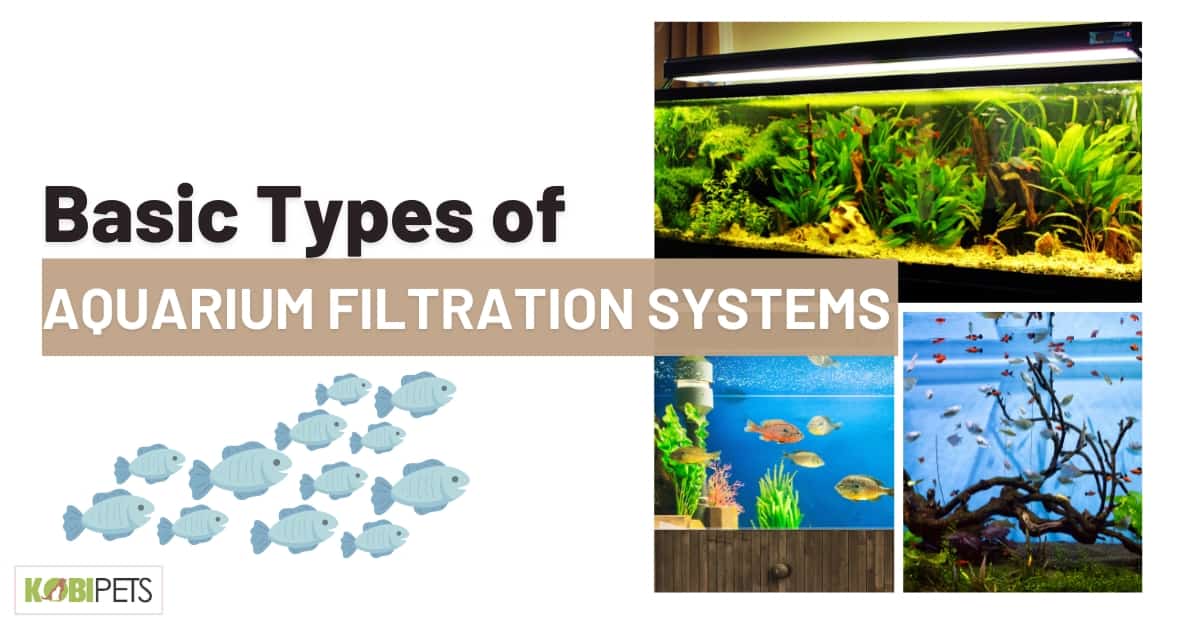
Aquariums are a great way to add beauty and life to your home or office. But keeping fish healthy requires more than just the right temperature, food, and water quality – it also means having proper filtration systems in place.
Aquarium filtration systems help maintain clean water by removing waste, toxins, and other impurities while providing beneficial bacteria with places to colonize. In this article, we’ll explain the different types of aquarium filtration systems available and the benefits they provide.
Purpose of Aquarium Filtration Systems
Aquarium filtration systems play a crucial role in maintaining the health and well-being of the aquatic life within. They work to remove harmful toxins and debris, creating a clean and safe environment for fish and other aquatic animals to thrive.
In this section, we will delve into the purpose of aquarium filtration systems and explore the different types of filtration available to ensure your aquarium is running at its best.
1. Removing solid waste from the aquarium water: Aquarium filtration systems are designed to remove debris, food particles, bacteria, and other solid wastes that can accumulate in an aquarium over time.
2. Maintaining water quality and clarity: Filtration systems help keep the water in your aquarium clean by removing chemicals, toxins, and other impurities.
3. Providing beneficial bacteria with a place to colonize: Beneficial bacteria help break down ammonia and nitrite in the aquarium water, keeping it safe for fish to inhabit. Without these bacteria, toxic levels of ammonia and nitrite can build up quickly and cause health issues for your fish.
4. Oxygenating the aquarium: Aquarium filtration systems can help oxygenate the water, which is essential for healthy fish and plants.
5. Circulating water: Filtration systems also help circulate water throughout the aquarium, providing beneficial bacteria and other beneficial particles with an even distribution of food sources throughout all areas of the aquarium.
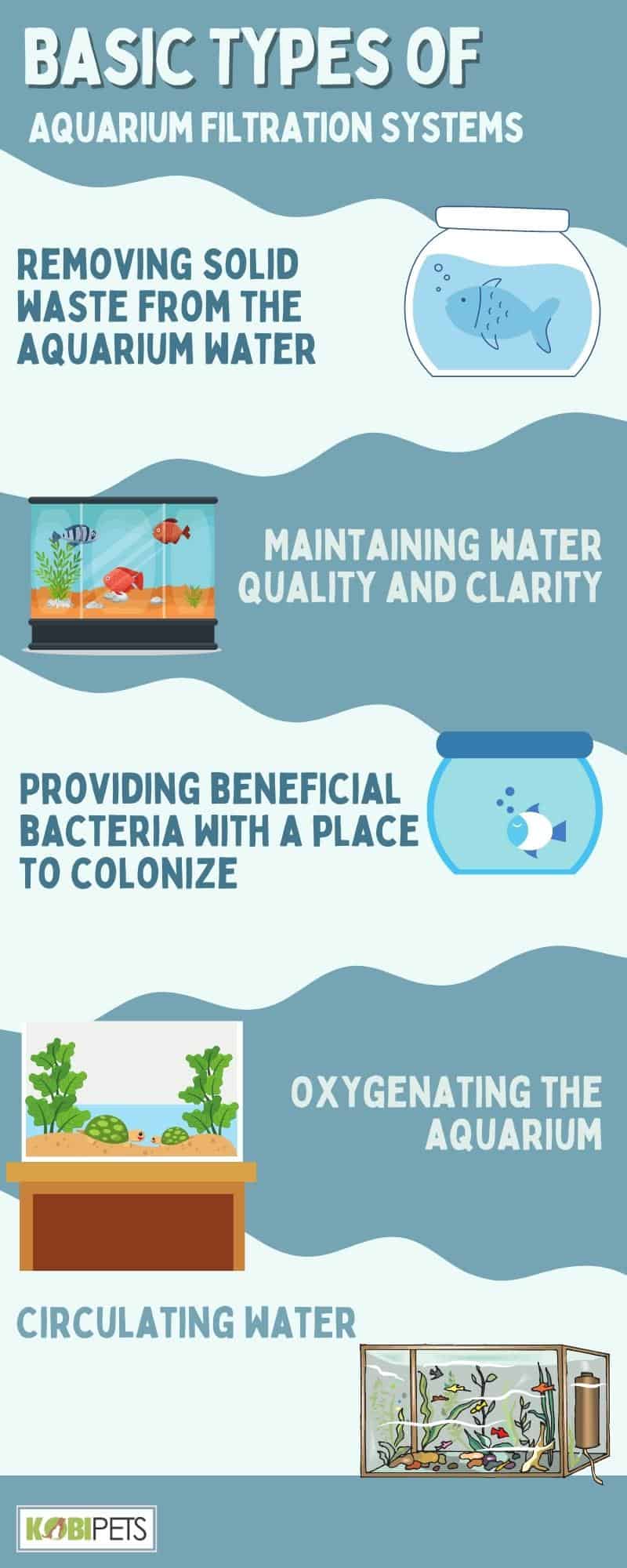
Purpose of Aquarium Filtration Systems
12 Types of Aquarium Filtration Systems
1. Mechanical Filtration System
Mechanical filtration is a type of filtration that utilizes physical means to remove debris and particles from the water. The most common type of mechanical filtration is the use of a filter media, such as a sponge or a filter pad, to trap solid matter like fish waste, uneaten food, and other debris.
This type of filtration can be accomplished through a variety of different types of filters, including sponge filters, hang-on-back filters, and canister filters. These filters work by drawing water through the filter media, trapping debris and particles as the water flows through.
Mechanical filtration is an effective way to keep the water in an aquarium clean, clear, and free from debris that can harm aquatic life. However, it should be noted that mechanical filtration alone is not enough to maintain a healthy aquarium, chemical and biological filtration should also be used in combination.
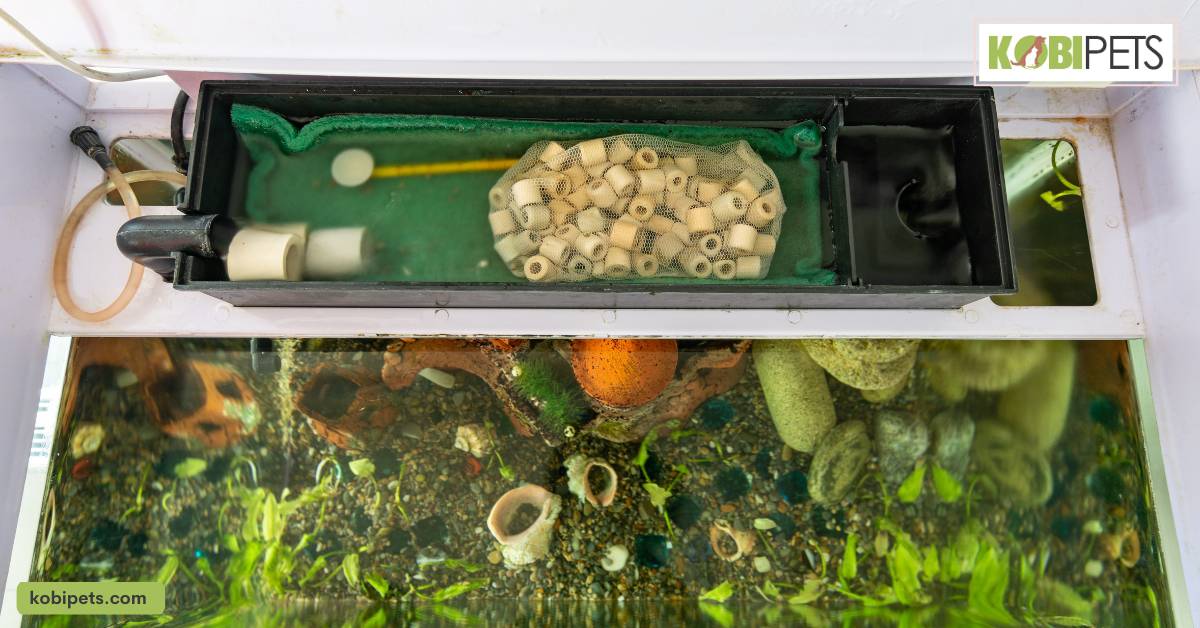
2. Chemical Filtration System
Chemical filtration is a type of filtration that utilizes chemical means to remove dissolved toxins and impurities from the water. The most common type of chemical filtration is the use of activated carbon or resin to adsorb dissolved impurities like chlorine, chloramines, and ammonia.
Activated carbon is a highly porous substance that can trap impurities as water flows through it, whereas resin is a synthetic material that can be used to remove ions and heavy metals. These types of chemical filters can be found in different types of filtration systems like canister filters, hang-on-back filters, and also as an addition to power filters.
Chemical filtration is an important aspect of maintaining a healthy aquarium as it helps to remove harmful toxins that can harm aquatic life. It’s important to note that chemical filtration media must be replaced regularly to ensure the filter is working effectively, and the frequency of replacement may vary depending on the type of chemical filter media and the level of contamination in the water.
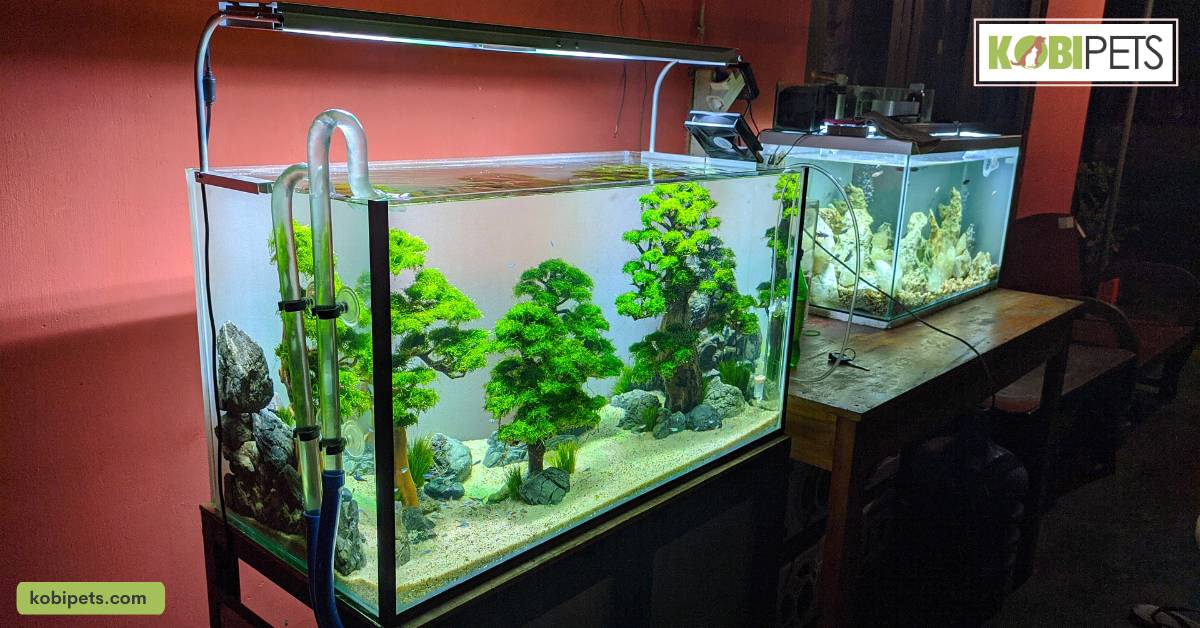
3. Biological Filtration System
Biological filtration is a type of filtration that utilizes living organisms to remove harmful toxins and impurities from the water. The most common type of biological filtration is the use of beneficial bacteria to break down harmful toxins like ammonia and nitrite, which can be toxic to fish and other aquatic life.
These bacteria can be found in different types of filtration systems like live rock filters, bio-filtration media, and Trickle Filters. The bacteria colonize the filtration media and when the water flows through the filter, the bacteria consume the harmful toxins.
Biological filtration is essential for maintaining a healthy aquarium, as it helps to establish a natural balance in the water, making it safe for aquatic life to thrive. It’s important to note that it takes time for the bacteria colonies to establish and mature and sudden changes in the water chemistry or over-cleaning the filter can disrupt the bacterial colonies and should be avoided.
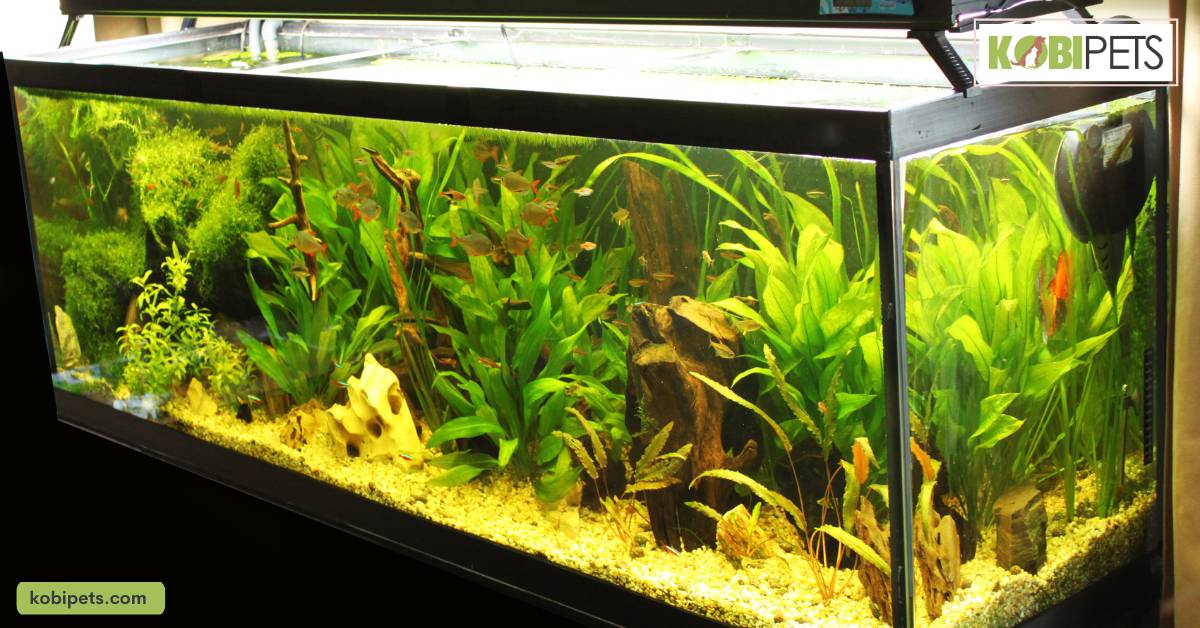
4. Wet/Dry Filters
Wet/Dry filters, also known as Trickle filters, are a popular type of aquarium filtration system that utilizes both wet and dry filtration methods. Water is passed over a bed of biomedia, such as bio balls or ceramic noodles, where beneficial bacteria can thrive and break down harmful waste products into less toxic compounds.
The water is then filtered through a dry section, usually made of coarse or fine materials such as foam or felt, to remove any solid waste or debris before returning it to the aquarium. Wet/Dry filters are particularly efficient in breaking down large amounts of fish waste and are ideal for heavily stocked or large aquariums, as well as reef aquariums.
However, they require a significant amount of space and maintenance to work properly.
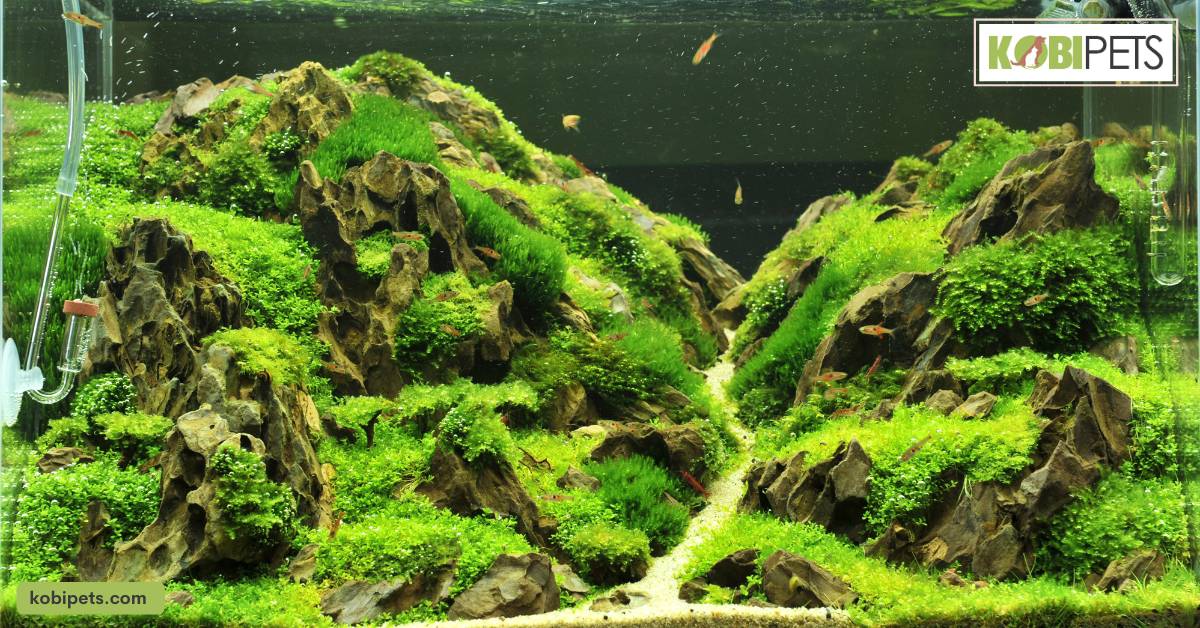
5. Canister Filters
Canister filters are a type of aquarium filtration system that is designed to provide mechanical, chemical, and biological filtration. They consist of a canister that sits outside the aquarium and is connected to the tank via hoses.
Water is pumped out of the tank and into the canister, where it is filtered through a series of mechanical and chemical filtration media such as pads, floss, and activated carbon. The water is then passed through a chamber containing biomedia, such as ceramic noodles, where beneficial bacteria can grow and convert harmful waste products into less toxic compounds.
The water is then returned to the tank, clean and clear. Canister filters are known for their high flow rate, which makes them ideal for larger aquariums and heavily stocked tanks. They also provide a large amount of filter media, which means they can go longer between maintenance cycles. However, they can be quite bulky and difficult to set up and maintain.
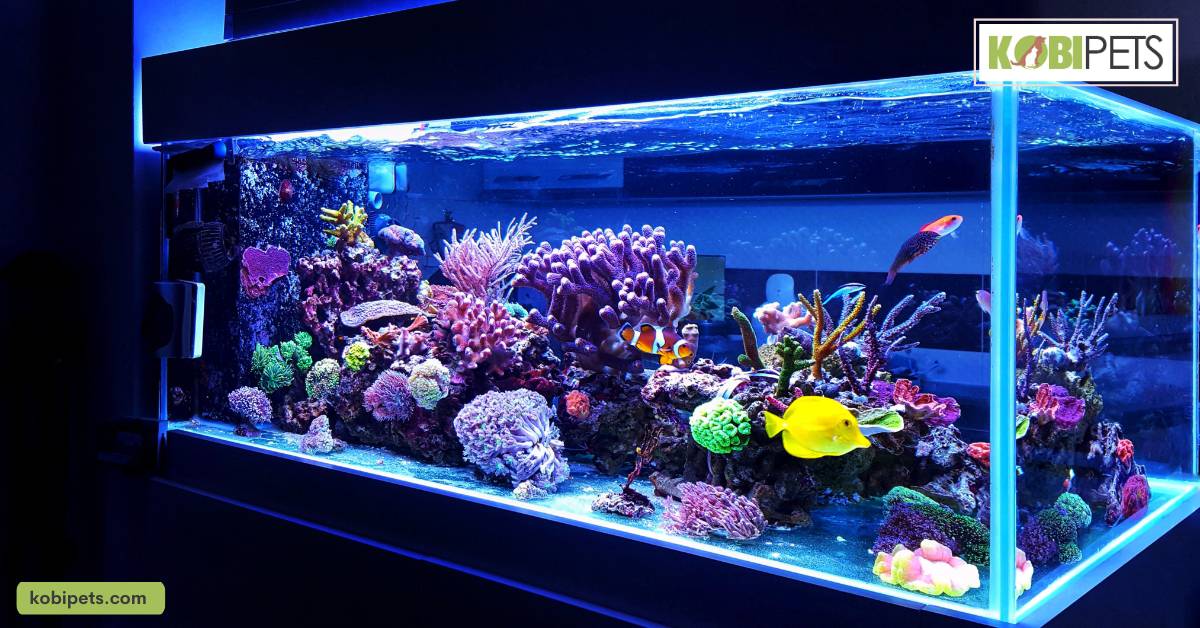
6. Hang-On-Back (HOB) Filters
Hang-On-Back (HOB) filters are a popular type of aquarium filtration system that is designed to be hung on the back of the tank. They consist of a filtration chamber that hangs outside of the tank and is connected to the tank via a tube. Water is pumped from the tank, through the filtration chamber, and back into the tank.
HOB filters typically provide mechanical and biological filtration. They use filter media such as foam or bio-wheels to remove debris and waste particles from the water, as well as provide a surface area for beneficial bacteria to grow.
Some HOB filters also include chemical filtration options such as activated carbon. They are easy to install, and their compact size makes them suitable for smaller aquariums. They are also relatively low-maintenance and affordable.
However, they may not be powerful enough for larger aquariums or heavily stocked tanks, and they may not provide sufficient mechanical and chemical filtration.
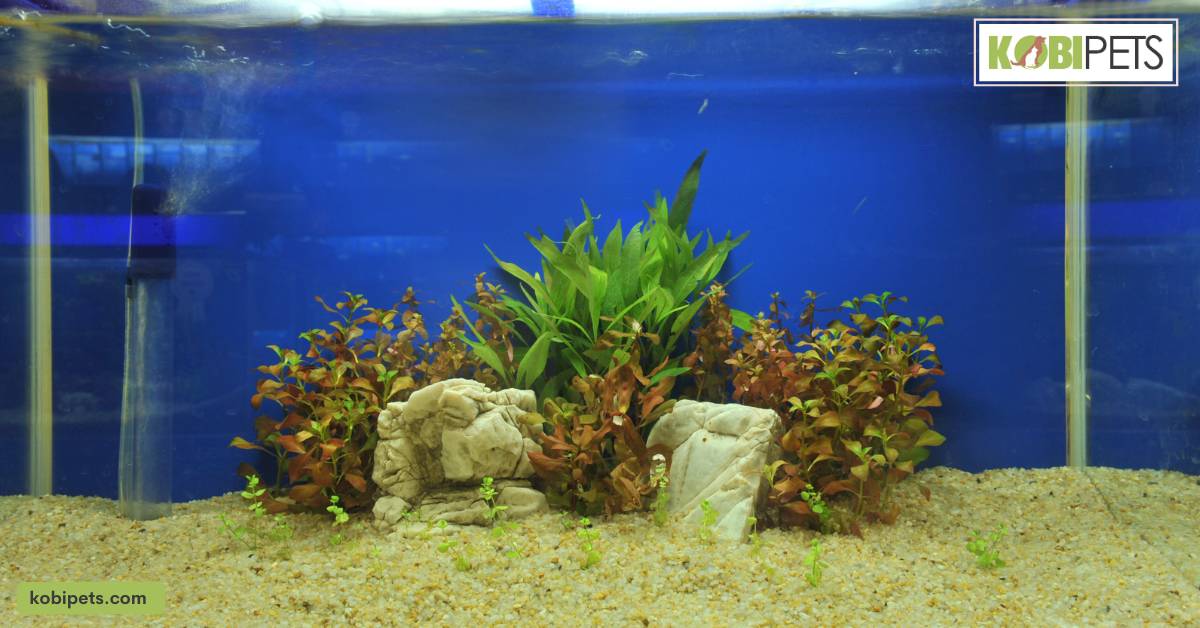
7. Undergravel Filters
Undergravel filters are a type of aquarium filtration system that is placed under the gravel substrate of the tank. They consist of a plastic plate with small holes that are placed on the bottom of the tank, and a powerhead that is used to pump water through the plate.
The water is pulled through the gravel and debris is trapped in the gravel bed, where it is broken down by beneficial bacteria into less harmful compounds. This type of filter is also known for providing biological filtration, as the gravel bed is a perfect place for the growth of beneficial bacteria.
Undergravel filters are relatively inexpensive and easy to install and maintain. However, they have some disadvantages as well, they can be difficult to clean and they may not provide sufficient mechanical or chemical filtration.
They also can’t be used in tanks with a sand substrate. Additionally, the gravel bed can accumulate detritus, which can lead to poor water quality and oxygen deprivation if not cleaned properly.
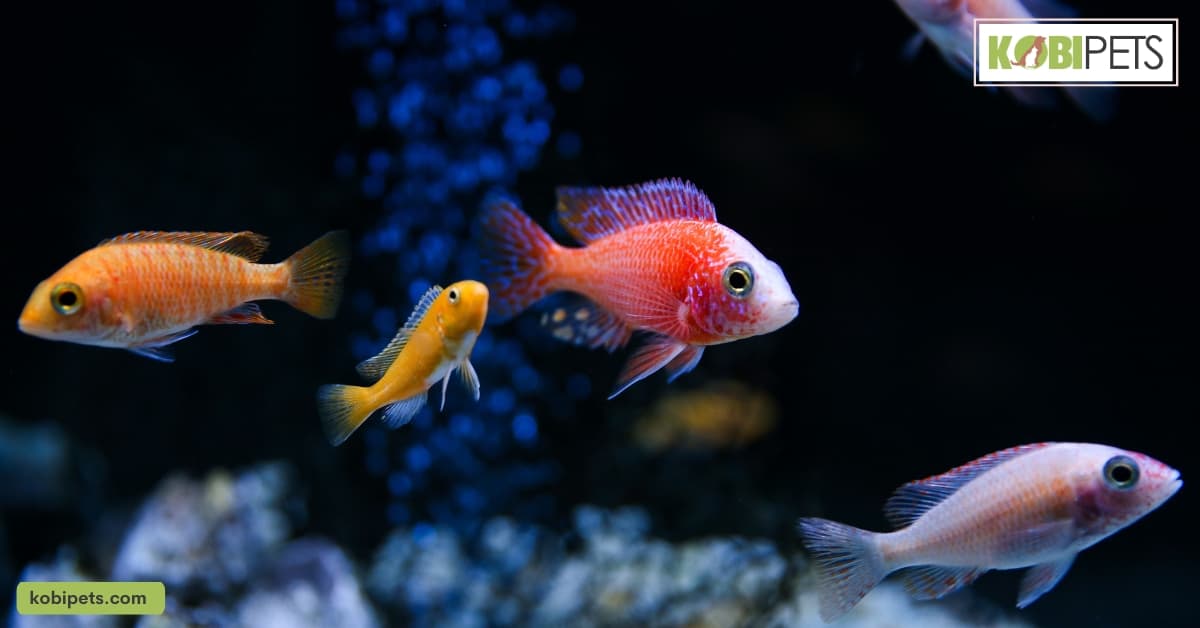
8. Power Filters
Power filters, also known as hang-on-tank filters, are a type of aquarium filtration system that is designed to be hung on the side of the tank. They consist of a filter chamber that hangs outside of the tank and is connected to the tank via a tube.
Water is pumped from the tank, through the filtration chamber, and back into the tank. Power filters typically provide mechanical, chemical, and biological filtration. They use filter media such as foam or bio-wheels to remove debris and waste particles from the water, as well as provide a surface area for beneficial bacteria to grow.
Some power filters also include chemical filtration options such as activated carbon. They are easy to install, and their compact size makes them suitable for smaller aquariums. They are also relatively low-maintenance and affordable. They are also great for tanks with a higher fish population or larger tanks that need more filtration.
However, they might not be as powerful as canister filters and HOB filters, thus not adequate for large or heavily stocked aquariums.
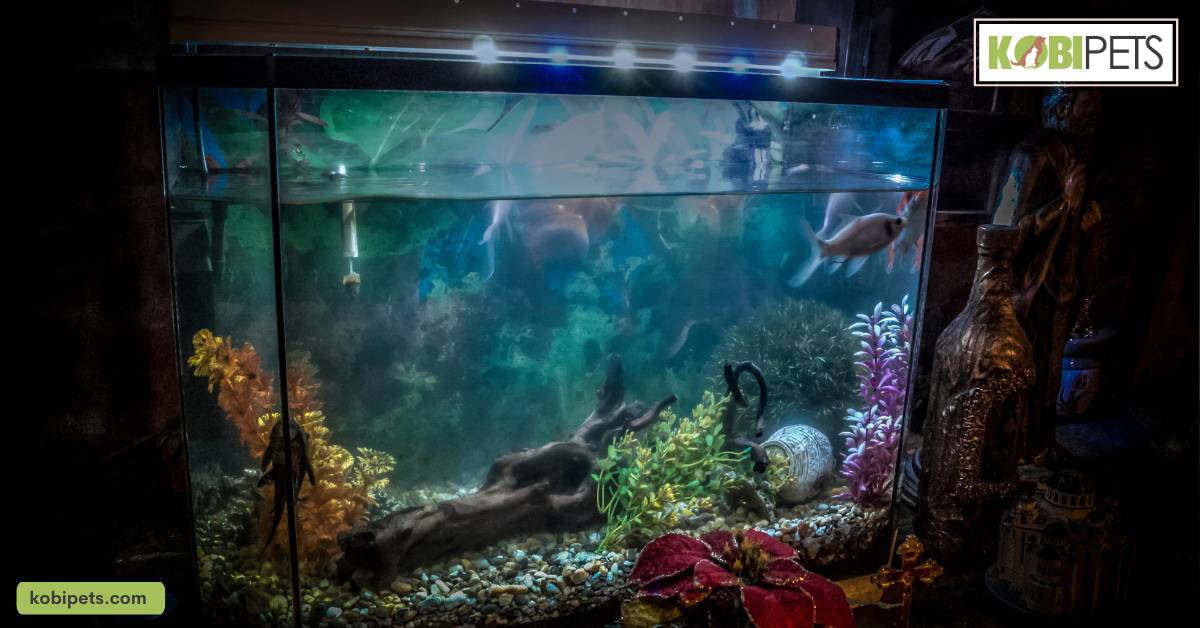
9. Diatom Filter System
Diatom filter systems are a type of aquarium filtration system that uses diatomaceous earth to remove very fine particles, such as algae spores and bacteria, from the water. Diatomaceous earth is a sedimentary rock made up of fossilized remains of diatoms, which are a type of phytoplankton.
These diatoms have a porous structure that traps and removes very fine particles from the water. The filter system consists of a chamber that holds the diatomaceous earth and a pump that pushes water through the chamber. The water is then returned to the tank, clean and clear.
Diatom filter systems are known for their high level of filtration and are often used in reef aquariums or other tanks where water clarity is a concern. They are also effective in removing algae spores, bacteria, and other fine particles, which can help to keep the water clean and clear.
However, they can be difficult to set up and maintain, and they require a significant amount of space.
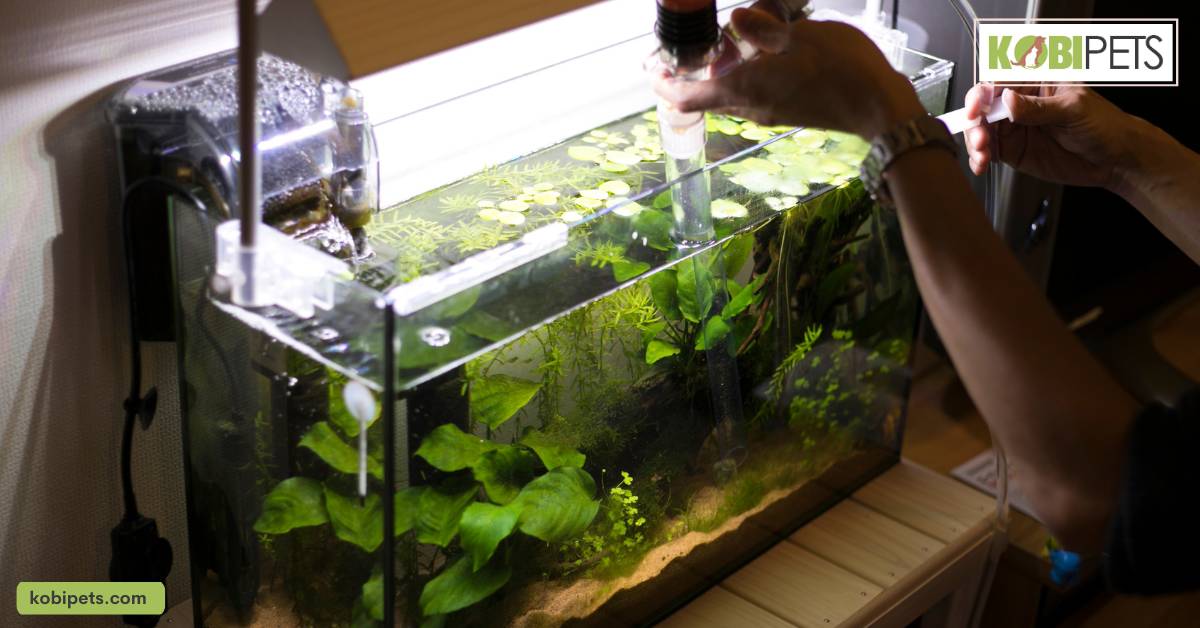
10. UV Sterilizers
UV Sterilizers are a type of aquarium filtration system that uses ultraviolet light to sterilize water. They work by passing water through a chamber that contains a UV lamp, which emits UV-C radiation.
This UV-C radiation kills or inactivates microorganisms, such as bacteria, viruses, and parasites, by damaging their genetic material. This makes the water safe for fish and plants and helps to prevent the spread of disease in the tank.
UV sterilizers are often used in conjunction with other types of filtration systems, such as canister filters or power filters, to provide an additional level of water purification. They are particularly useful in reef aquariums, where they can help to control harmful microorganisms that can damage coral and other invertebrates.
UV sterilizers can also help to reduce the number of algae in the tank and to clarify the water. UV sterilizers are easy to install and maintain, but they do require a power source and a UV lamp that needs to be replaced periodically. They are also relatively expensive and might not be suitable for all types of aquariums.
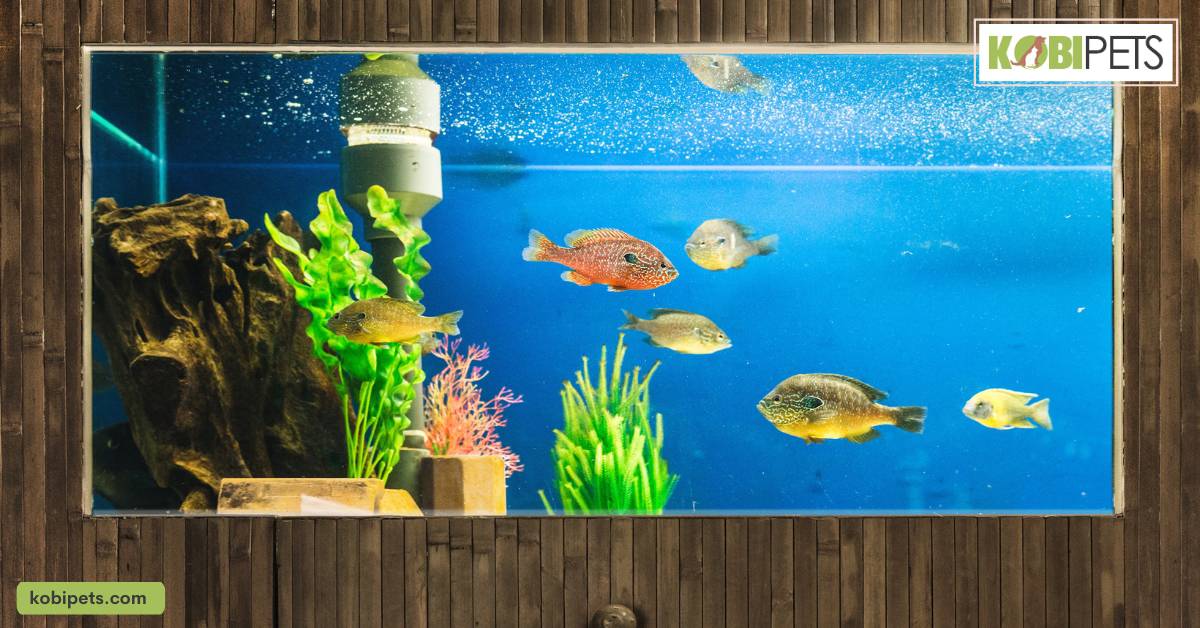
11. Ozone Oxidation Systems
Ozone Oxidation Systems are a type of aquarium filtration system that uses ozone to purify water. Ozone is a highly reactive form of oxygen that is created by passing air or oxygen through an electrical discharge, also known as corona discharge.
This process creates ozone gas, which can then be dissolved into water. Once dissolved, the ozone will react with and eliminate dissolved organics, bacteria, viruses, and other contaminants from the water.
Ozone systems are often used in conjunction with other types of filtration systems, such as protein skimmers, to provide an additional level of water purification. They are particularly useful in reef aquariums, as they can help to control harmful microorganisms that can damage coral and other invertebrates.
They are also effective in controlling unwanted algae blooms and clarifying the water. Ozone oxidation systems are relatively easy to install and maintain, but they do require a power source and an ozone generator that needs to be replaced periodically.
They are also relatively expensive and might not be suitable for all types of aquariums. It’s important to note that when using ozone systems, it’s important to measure the ozone levels in the water as it can be harmful to fish and other aquatic life if levels are too high.
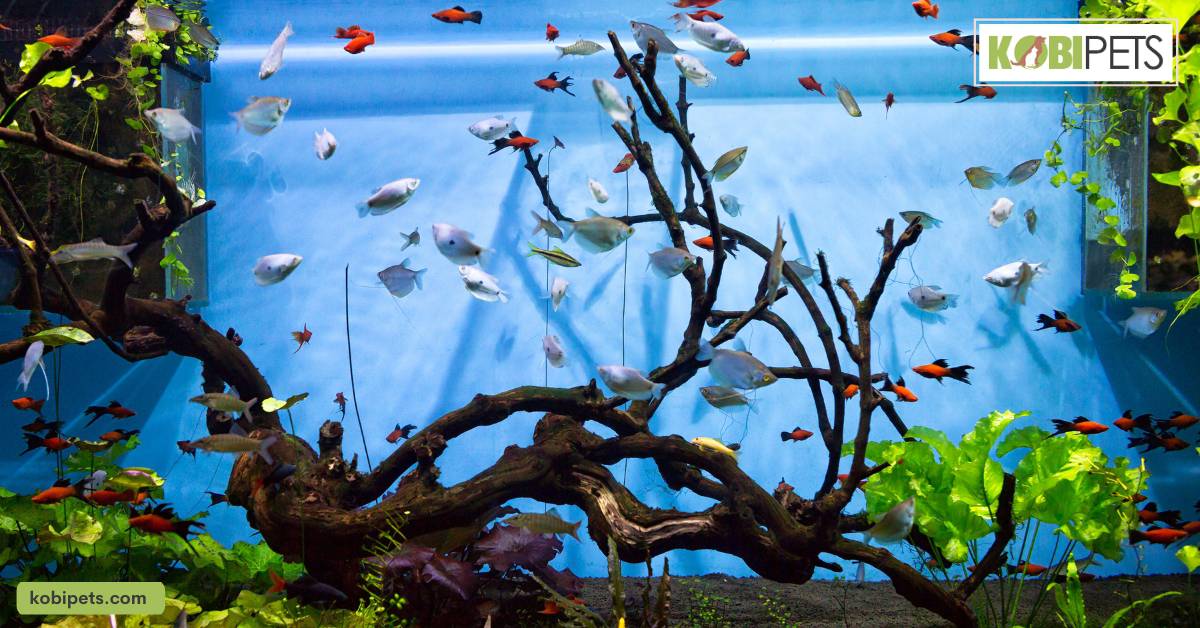
12. Sumps
Sumps are a type of aquarium filtration system that is designed to provide additional filtration and water volume to the tank. They consist of a separate tank or compartment that sits beneath the main aquarium and is connected to the main tank via a hole drilled in the bottom or back of the tank.
Water is pumped from the main tank into the sump and then filtered through a series of mechanical and biological filtration media before being returned to the main tank. Sumps provide several benefits such as additional water volume which can help stabilize the water temperature and pH and increase the overall water volume which can help dilute waste and improve water quality.
They also provide additional space for equipment such as protein skimmers, heaters, and pumps. Sumps can also be used to house additional filtration methods like refugium, and Diatom filters. They are also relatively easy to install and maintain and can be customized to suit the specific needs of the tank.
However, they can be relatively expensive and require a significant amount of space, and they also require a hole to be drilled into the tank.
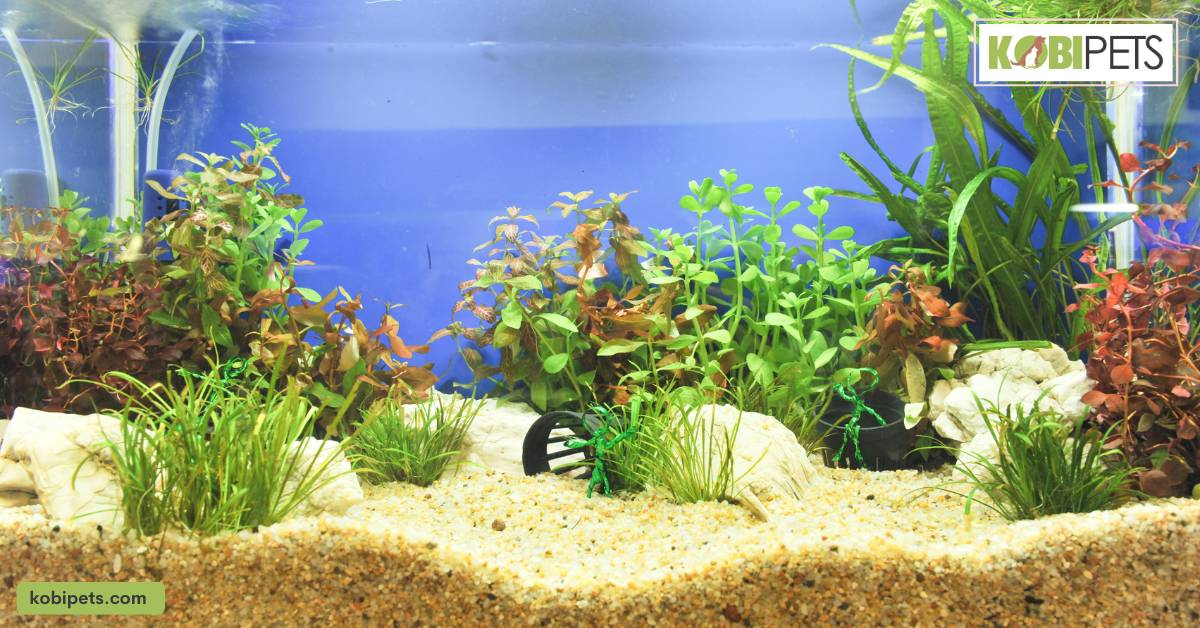
In Conclusion
There are many types of aquarium filtration systems available to suit the needs of any aquarium. Each type has its own advantages and disadvantages, so it is important to do research and find out which system will work best for your tank.
Biological filtration is essential in providing a healthy environment for aquatic life, however mechanical, chemical, and ozone filtration are also important in keeping the water clean and clear. Ultimately, it is up to you to find the right system for your aquarium that will provide proper filtration and a stable environment for your fish and plants.


